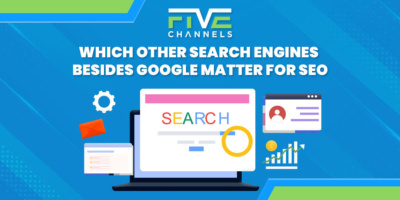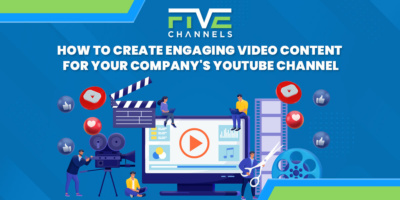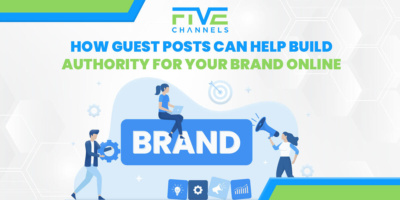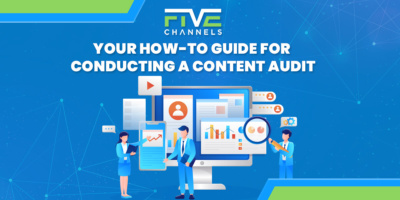Ready for some grim statistics? 20% of new businesses make it past their first year of operation. Half of those businesses no longer exist after five years, and only a third of those businesses make it ten years.
If you want a business to make it, you need grit, determination, and a solid plan for success.
In our increasingly digitalized world, your marketing strategy represents one of the key factors distinguishing you from the competition.
Marketing optimization can take your business to the next level, here is what you need to know to do it properly.
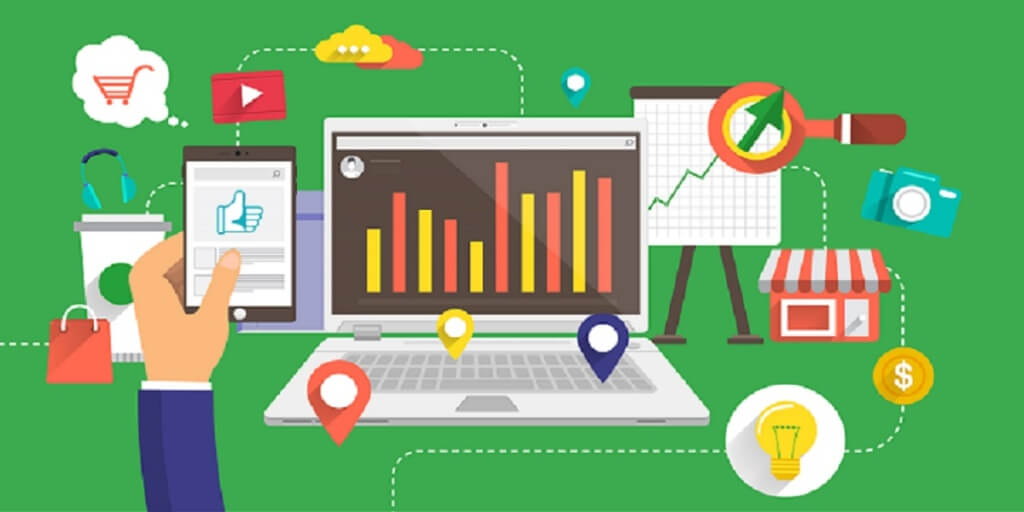
Step 1: Identify Your Business Objectives
It’s not enough to throw thousands of dollars on a lofty marketing budget. In fact, this is a waste of both time and money.
Before you even begin your marketing strategy, consider these factors.
Target Audience
Who is your ideal customer? Where do they live? What do they do for work? Do they have children or pets? How do they spend their free time?
You need to develop a clear picture. If you are an existing business, start by examining your current customers. Who are they, and why are they buying from you? What common traits do they all share?
Scope out the competition. Who is their target audience? What people might they be missing?
If you’re just starting, spend some time assessing your product or service. What are the benefits it provides? What kind of person would most appreciate what you have to offer?
In identifying your target audience, you should have a firm grasp of their:
1. Age
2. Location (if applicable)
3. Gender
4. Occupation
5. Ethnicity
6. Socioeconomic Status
7. Education Level
8. Family and Marital Status
9. Interests and Hobbies
Knowing these key features can help you shape your marketing strategy. After all, it’s hard to optimize when you don’t know your intentions.
Step 2: Focus on Retention
Are you only focused on driving sales or expanding? It could be a costly mistake! If you already have loyal customers, you don’t want to squander their business.
Here’s some food for thought: research shows that 80% of your business comes from just 20% of your customers. In other words, you better take care of your existing fans. They just might be the bread and butter to your revenue.
Identify Customer Value
To start, you must measure your customer acquisition value. Your ROI refers to how much individuals spend in their first purchase compared to how much it cost to acquire them.
That said, it’s often not a fixed amount. Acquiring a person once may not be enough to keep him or her loyal to your product.
Create Incentives
Have you ever bought a product online and then received an email coupon for 20% off your next purchase? Likewise, have you ever received a follow-up email reminding you of products left in your shopping cart?
These marketing tactics focus on customer retention. Rather than only trying to acquire new customers, they focus on attracting their current fanbase.
People want to feel special. More than that, they don’t want to feel like they’re getting ripped off or taken for a fool. You need to dance that fine line to address both priorities.
Step 3: Get Your SEO Down
In this online world, a dynamic and efficient SEO strategy is inevitable. If you don’t have your SEO mastered, the competition will swallow you whole. Furthermore, avoiding SEO (or making SEO mistakes) can negatively impact your business.
DIY Method
If you’re willing to take the time and research to learn SEO, you can do it on your own. That said, it does require persistence and diligence.
Keywords
To start, you need to engage in keyword research. There are many free tools available, such as Google’s Keyword Planner, that can help you begin. You can also try premium tools like AHREFS or SEMRush.
Ideally, you want to strike that balance between finding keywords with high traffic volume that aren’t impossible to rank for. Long-tail keywords are often the best bet.
Backlinks
Backlinks essentially build authority within your industry. If you generate backlinks from high-quality sites, it helps improve your online reputation and website’s domain authority.
Acquiring backlinks takes time. You can consider reaching out to different site owners and offer to guest post in exchange for providing a backlink to your business’s site.
Analytics
You need to learn how to read and interpret your website’s conversions and traffic trends. Many beginners start with Google Analytics, as it provides visitor information and customizable tracking goals for free.
Familiarize yourself with learning and reading about the data. This will help you tweak your campaigns for optimal results.
Step 4: Consider Outsourcing
As mentioned, a quality SEO strategy takes time and persistence. If you lack these (or simply aren’t interested in the learning curve), it may be best to outsource to a professional.
A professional SEO company can help you with:
-Content Marketing
-Social Media
-SEO
-Email Automation
-Remarketing and Referrals
Professionals can help you elevate your current marketing strategy to the next level without you having to figure it all out on your own.
Take your time to research different companies but be cautious with your search. If anyone promises instant or guaranteed results, they’re likely using shady tactics or are an outright scam.
Step 5: Streamline Email Marketing
Email is by far one of the best ways to reach your audience. In fact, research suggests it may be 40 times more effective than social media acquisition.
However, you need to make sure that you’re doing the right kind of email marketing to yield the best results. Otherwise, you risk turning off your current and potential customers.
Provide Undeniable Value
Worldwide, we send a staggering 205 billion emails each day. Think about how many of those emails you automatically trash without opening them.
In other words, your email strategy needs to be efficient and valuable. Send downloadable guides. Provide tantalizing coupons. Send links to your most valuable blog posts.
This is a quality-over-quantity strategy. Nobody wants to receive a ton of emails after buying one product from you.
Use a Newsletter
Email marketing services like MailChimp make it easy to create convenient, mobile-optimized emails.
These services also allow you to integrate email lists, create sign-up forms, and make newsletter templates.
Many of them also allow you to test out different subject lines. With this strategy, you can determine which kinds of pitches best attract your target demographic.
Focus on Your Call-To-Action
Let’s be honest. Nobody wants to read a massive paragraph of text from you. Instead, they’ll decide within a quick moment whether they want to click through your email.
Keep your message short and to the point. Be authoritative in showing or telling them what they need to do next (i.e., “click for more” or “view our deal now!”). Make the CTA visible, aesthetically pleasing, and direct.
Step 6: Overhaul Your Social Media
First things first, if you aren’t active on the major social media platforms, you’re probably missing out on tens of thousands of potential customers.
However, not all social media platforms are created equal. Successful marketers understand each platform’s nuances. They use those differences to their advantage.
Use Automation Tools
Manually managing social media takes tremendous time and effort. It’s also easy to make mistakes or forget your posting schedule.
Instead, it’s best to automate your social media by using specific planning software. Today, there is no shortage of tools available. Popular options include:
-Buffer
-Hootsuite
-SproutSocial
-Hubspot
Each of these allows you to schedule your social media posts in advance. They also allow you to track your accounts when people comment or leave messages.
Focus Your Efforts
Facebook. Twitter. Pinterest. Instagram. It’s easy to get distracted by all the different channels and feel overwhelmed with how to start.
While many companies successfully dominate all the platforms, you don’t need to do this from the beginning.
Instead, it may be best to focus your attention on 1-3 different platforms. This gives you the time to understand each platform and its user base intimately.
It also allows you to spend time focusing on how to gain traction, followers, and customer interaction.
Use Social Media Buttons
If your website uses a blog, which it should, make it easy for followers to share your content on social media. Numerous plugins allow users to share posts with the click of a button.
Furthermore, you can set up your blog to automatically post on social media whenever you publish new content.
Engage with Your Customers
Even if you use automation tools, customers can detect inauthenticity. That said, social media provides an amazing opportunity for you to interact with your customers.
Share and comment on other business’s content. Reply to your customer’s questions. Give shout-outs to your fans.
Today, more and more people want to know the face behind the brand. That means they want to know who you are, and what you stand for, outside of just the product or service you’re selling.
Step 7: Assess and Audit Routinely
It’s one thing to create your marketing campaign. It’s another to determine if it’s actually working.
However, marketing optimization requires that you routinely assess your efforts. This helps you figure out your strengths and weaknesses. It also helps you decide where to next invest your time or money.
Website Audit
A website audit allows you to identify your site’s weak points. Create a document where you can track your findings.
Start by looking at your homepage. Do you have a popup? Is it actually providing value to your customer?
Do you have a CTA on your homepage? Have people been clicking it?
What about your blog? How often have you been posting? Which articles yield the best results? Can people quickly find your blog?
You’ll want to go through each of your site’s main pages. This is a great time to test for site speed and other technological issues. If your site takes too long to load, there’s a good chance most people will hit that dreaded ‘back’ button.
Advertising Audits
If you use paid advertising, you need to audit that, too. If you don’t, you’ll waste a lot of money.
With this, you want to create a report for the past 2-3 months for each of your paid accounts. Identify your priority metrics to establish your ROI.
In other words, is the money you’re spending generating you the kinds of results you want? If not, what needs to change?
For example, if many people click through the ad but don’t convert, is your website to blame? Is it the advertisement itself?
The Customer’s Buying Journey
At the end of the day, marketing comes down to numbers. You want your customers to buy your product or service.
If you have gaps in the funnel, you won’t receive the conversions you need. This may come down to the organization. Are your calls-to-action efficient?
Is it easy for customers to locate how and where to buy your products or services? Do you offer streamlined methods for payment? Are the benefits of buying from you completely clear?
You don’t want your customers guessing. Furthermore, you don’t want them hunting around finding how to purchase what they need.
Professional Auditing
The DIY method might be overwhelming. It requires interpretation and data analysis, and you may not have the time or desire to focus your efforts on this process right now.
There are numerous companies that can assist you in professional site auditing. Whether you want a one-time audit, or a longer-term commitment, this can be one of the best investments you make for your business.
Final Thoughts on Marketing Optimization
Your marketing strategy is important, but chances are, you have dozens of other priorities, too. Marketing optimization helps you make the most of your time and resources.
Interested in reviewing how efficient your strategies are? Get a free digital marketing review today!
Owner and Chief Marketing Officer, Jason Hall, and his team specialize in creating brand awareness / traffic and lead generation / marketing funnel and conversion optimization, while utilizing the appropriate marketing channels available within your industry. With diverse clients throughout the world, Jason's team is well connected within many industries to assist with your marketing strategies. With no long term contracts and various levels of service, Jason's team will increase the quality of your online traffic, leads, and sales.
About the author...
Located in the heart of the Emerald Coast - Destin, FL, founder and Chief Marketing Officer, Jason Hall, and his team specialize in creating brand awareness / traffic and lead generation / marketing funnel and conversion optimization / and PR campaigns, while utilizing the appropriate marketing channels available within your industry.
With diverse clients throughout the world, Jason's team is well connected within many industries to assist with your marketing strategies. With no long term contracts and various levels of service, Jason's team will increase the quality of your online traffic, leads, and sales.




